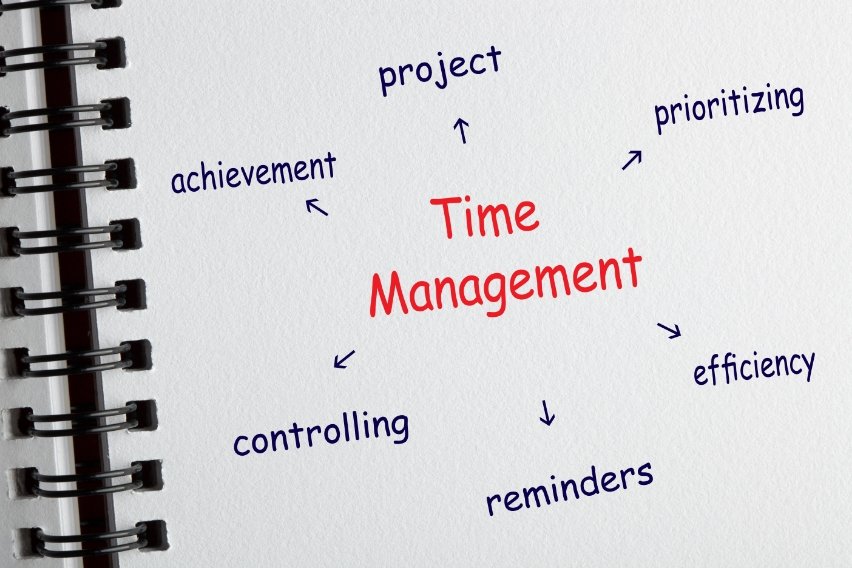Performance Standards: Levels, Types & Importance

Every job has a description and breakdown of different duties and responsibilities. Some jobs will have different tasks to complete and obligations to meet. The description will tell you what needs to be done in the position.
Yet, within each position, there are performance standards. They dictate how to perform specific duties and responsibilities. They’re an effective way to measure how well you’re doing the job.
Read on to learn everything you need to know about performance standards and how they work. We will also cover the different levels, types, some examples, and more!
Table of Contents
What Are Performance Standards?
Three Levels of Performance Standards
Why Are Performance Standards Important?
Types of Performance Standards
Examples of Performance Standards
What Are Performance Standards?
Performance standards are criteria set by management that staff members must follow. Performance standards and job descriptions are two different things.
The specific tasks of an employee get included in the job description. Performance expectations specify how an employee must carry out the tasks. They get approved by management and may contain a variety of recommendations.
Standards get influenced by both the industry and the employee. They are often established at the start of the year or a quarter. The employee will then be aware of the requirements and how to meet them.
The job description establishes the performance standards. Expectations must get matched with every part of the job description. To meet them, the employee must get motivated and eager to go the extra mile.
Performance standards are often:

- Realistic
- Measurable
- Transparent
- Objective
Uncertain expectations are a problem for both the employee and the company. Standards should get written down or otherwise documented. This makes them accessible to both the manager and the employee.
The plan should cover both general and targeted actions. But general measures must get implemented before focused ones. They serve as a guide for the employee to follow.
Three Levels of Performance Standards
Performance standards can be for a specific department or an entire organisation. But there can be three levels. These are:
- Strategic performance management
- Operational performance management
- Individual performance management
Let’s take a closer look at how each of these works.
Strategic Performance
The main goal of strategic performance is to help achieve objectives. Because of this, strategic standards are a necessity in many industries.
To achieve these goals, standards need to get monitored. After that, you can adjust them as needed. It’s a helpful way to ensure workers work towards company objectives.
Operational Performance
At this level, the emphasis is on how departmental operations support objectives. Departments may be subject to performance requirements set by management.
Management will ask themselves these questions to help reach peak operational performance:
- Are the individual departments reaching or exceeding their targets? If not, what can get changed?
- Are the operational activities of each department in line with the strategy? How are the activities promoting or impacting the strategies?
- Should a department or individual project get changed? Or are they proving to be efficient enough to continue?
Individual Performance
This level is about each employee’s success within the organisation. The first step is to establish work standards and goals. From here, management can take necessary steps to help enhance performance. This ensures employee performance meets company requirements.
The benchmark for measuring an employee’s performance is the performance standards. These requirements are crucial because they look at various performance areas.
The following are some of the most frequent questions management ask:
- How are individual employees working?
- Are they doing what they need to do to help reach company goals?
- If not, how can they improve their performance?
Why Are Performance Standards Important?
Performance standards are essential because they provide context for how employees should perform. This makes it possible for the employer and employee to have frank conversations.
It also describes how specific employees can achieve company goals. For instance, communication might be one of the performance guidelines. Communication definitions and guidelines are provided in performance standards.
Types of Performance Standards
Standards can vary depending on the business, industry, and employee role. But, there are still common types of performance standards worth covering.
Teamwork
Employers may set performance standards for cooperation if employees collaborate. Working together as a team to complete a task is teamwork. Contributing to a collaborative workplace is crucial.
Within the company, employees may need to help one another out. For instance, they might need to share project-specific knowledge with the team as a whole. Management might have collaboration as a requirement.
Communication
The ability to express thoughts or knowledge to others is communication. Communication can be both verbal and written. Employers may use these standards to promote better communication.
Effective communication is a useful skill for employees to have. This is so that it can increase teamwork and productivity. When working on various tasks or projects, employees communicate with one another.
Problem-Solving
Employers may also include problem-solving as a requirement. It refers to the ability to identify problems and propose solutions. This is a common rule because the majority of occupations need problem-solving abilities.
A project manager, for example, may need to use problem-solving skills to come up with a solution. Problem-solving criteria can be used to evaluate how employees respond to challenges.
Professionalism
This standard governs how employees conduct themselves at work. This can include remaining calm and composed on the job. It can also include being pleasant and encouraging to other members of the team.
It could also refer to other aspects of office behaviour. It could include being on time and dressing according to company policy. Professionalism may be essential in a business where employees interact with customers. Teachers, for example, should conduct themselves professionally when speaking with their students.
Accountability
This is a reference to accepting accountability for your actions. Accountability proves that workers are responsible for their choices. It also shows that employees are aware of their responsibilities on a team. Employers can assess a worker’s independence and capacity for responsibility through accountability.
Time Management
Time management relates to how well employees complete their tasks. This gets done within a timeframe or deadline. Employers do this by making time management a performance standard.
In many businesses, time management is a performance indicator. Employers can use it to see how employees spend working hours. From here, strategies for better time management can get implemented.
Examples of Performance Standards
Performance standards will vary depending on the job description and the role. Yet, all standards show how a job should get completed. Let’s take a look at an example of performance standards for an administrative assistant.
First, there will be a set of performance standards that are specific to the job function. Then, there will be a further breakdown of the expectations. Finally, there will be a benchmark to reach. This ensures the performance standards are being met or exceeded.
For example, an administrative assistant might have the following performance standards to meet:
- Supervising functions. The employee must ensure various work responsibilities and priorities are set and followed. They must also monitor the performance of support staff.
- Arranging and completing correspondence. Correspondence must align with company goals. This can include ensuring it’s grammatically correct, clearly defined, and professional.
- Preparing travel documents and travel arrangements. The employee must make travel arrangements when needed. These must get done on time and within the defined budget. Additionally, the employee needs to ensure all travel documents are up-to-date and accurate.
- Creating, organising, and filing various files and documents. Databases must get updated by the employee. Files and documents are also created by them.
Key Takeaways
Creating performance standards ensures employees are performing well. Establishing performance standards leads to better performance. It can also lead to better customer satisfaction. Employees can develop creative solutions that align with company goals, as well.
Performance standards help new employees and existing employees understand expectations. When a company decides to create performance standards it will include relevant information. To determine quality, it will also include performance objectives to achieve.

FAQs on Performance Standards
How Do You Measure Performance Standards?
In most instances, performance standards get measured using a set of criteria. These include being realistic and measurable. This ensures the standards are clear and the employee knows how to meet them.
What Is the Importance of Performance?
Performance is critical in every type of role. Performing well increases engagement and productivity, and leads to better time management. Employee performance is important for the success of a company.
How Do You Improve Performance Measures?
This can depend on the role and the industry. Yet, there can be ways to improve performance measures. These include researching best practices and collecting data. It can also involve employees in more decision-making.
RELATED ARTICLES

 Top 15 Time Management Techniques That Work
Top 15 Time Management Techniques That Work How to Increase Productivity in the Workplace (10 Easy Tips)
How to Increase Productivity in the Workplace (10 Easy Tips) How to Measure Productivity: Best Methods & Tips
How to Measure Productivity: Best Methods & Tips Team Collaboration: Definition, Importance & Benefits
Team Collaboration: Definition, Importance & Benefits